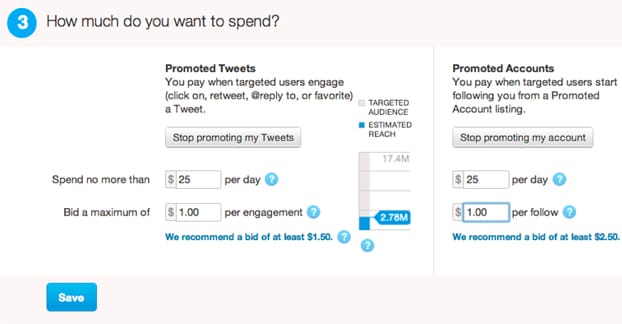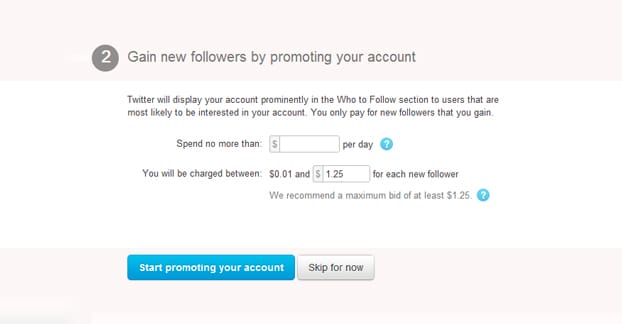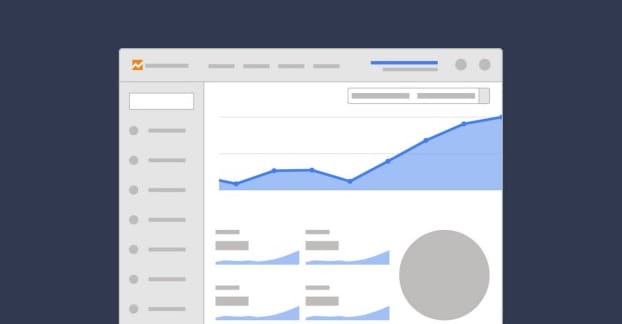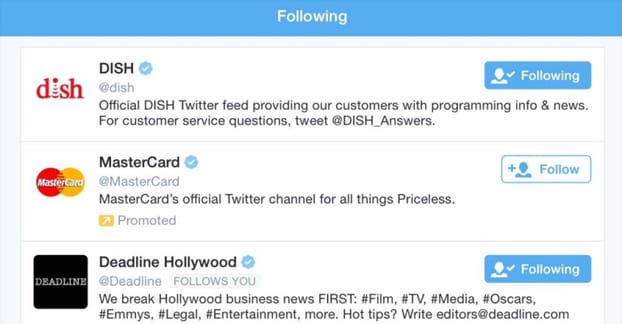The purpose of using social media is to network with, engage with, and get your content in front of your audience. Twitter ads facilitate this by allowing you to spend money to guarantee that your content is seen by people in your chosen audience. Given that Twitter has over 300 million active users, it seems like just about any business can thrive with the right selective investment.
The cold fact is, though, some businesses simply aren’t cut out for using Twitter to make money.
Type of Business Models
There are a lot of different ways you can run a business these days. You can sell items directly, or sell them through dropshipping. You can open a franchise of an existing chain. You can offer a service for free with paid upgrades. You can offer a product or service on a subscription basis. You can offer content for free and make money through affiliate marketing or through display ads. You might also run a business that uses any one of these business models, but explicitly sells to other businesses instead of general consumers.
Nothing about a specific business model makes Twitter a waste of time or money. Anyone can succeed on Twitter given the right incentives, the right creativity, and the right attitude.
There is really only one “business model” that isn’t going to be worth your time on Twitter, and that’s if you’re in one of the industries or models that Twitter directly prohibits.
What Twitter Success Takes
So what does it take to be successful with Twitter, particularly with Twitter advertising? It’s generally pretty simple. You have metrics you measure, and you need those metrics to go up, in a way that’s more efficient or faster than other uses of the same time and money. So what’s your metric?
New followers: You don’t need to make money to be a success. Any follower growth is good, but using ads to grow more followers more quickly is a good metric to follow. Of course, you need to make sure that your followers are real people, people in your audience, not just random people. I’m sure plenty of people now follow Wendy’s even if they have no intention of eating their food, just to witness the sass. On the other hand, Wendy’s is such a large franchise that they don’t necessarily have to care that a bunch of their followers aren’t actively shopping with them.
Website views: Your business centers around your website, and in order to be more successful with your business, you need more people on your website. Your Twitter account is a means to an end, and ads excel at getting eyes on the page. The tricky part is making sure the people who see your ads and get to your website are people in your target audience. If you’re referring people who have no interest in your product or service, they aren’t going to be making you money.
Money: At the end of the day, it all comes back to cold, hard cash. A business is only successful if it makes a profit, so everything you do comes down to return on investment. The ROI of Twitter Ads can vary wildly depending on a thousand factors, everything from your landing page to your ad copy to your targeting to your budget. You feel the drive to optimize every penny to get the most out of it.
For all three of these, there is success and failure. If you’re using Twitter to get more followers, but all you get are bots, you’re not doing well. If you’re using it for website hits but those hits don’t make you a profit, you’re losing out. If you’re in it for the returns but the returns are negative, obviously something is wrong.
The Alternative Definition of Success
The dirty secret about social media marketing is that a direct ROI is rarely going to be positive, because many of the effects of a positive social media presence are difficult to measure.
Scenario 1: You build up a social media presence. Someone walks into your storefront and buys an item. These two events are unrelated, as far as you know. The customer, however, only knows about you because of your Twitter account. If you hadn’t built up that presence, you wouldn’t have had that sale.
Scenario 2: You build up a social media presence. Later, someone from a press publication comes to interview you. You assume it’s simply because of your prominence as a business, but it’s actually because the reporter was reading your Twitter feed and thought you had some interesting opinions.
Scenario 3: You build up a social media presence. You start interacting with other business owners in your niche on Twitter, and eventually decide to form a partnership that helps co-found an industry event. You’re now a big name influencer due to your sponsorship of that event, and while there’s a lot of work in organizing it every year, it has tripled your income.
Okay, so that last one is more directly traceable to Twitter, but if you’re just looking at things from a cost:benefit analysis, you might not want to do it. It makes you an authority, but it’s also a lot of time and energy and money to run an event, so you could still come out in the red.
The point is, social media is not necessarily there to improve your profits or boost your website traffic. It can do those things, but where it really excels is in changing public opinion. When you have an active Twitter account that primarily posts good information, insight, questions, and interaction with fans, you’re building yourself up as an expert and an influencer. It’s from that position that you can leverage your new power to grow your brand in other ways, outside of Twitter.
That sort of thing isn’t easy to measure.
Making Twitter Ads Not a Waste of Time
If you’re worried that you’re wasting time and money on Twitter ads, there are techniques you can use to optimize them to be more successful.
1. Decide on an Advertising Method
There are three kinds of promotion you can pay for with Twitter ads. You can pay to promote individual tweets, which takes a single tweet and puts it in front of people who wouldn’t normally see it because they aren’t following you. It’s a good way to drive traffic to a site or a specific tweet, it’s a good way to reach a wider audience, and it’s fine for raising brand awareness.
You can pay to promote your account as a whole, which makes you show up as a promoted element in the “who to follow” box Twitter helpfully supplies. This one is ideal for getting more followers, but it helps if you’re coupling it with other elements of marketing.
You can also pay for promoted tweet ads, which can help for large-scale ad campaigns like a new product launch or a new event. On the other hand, they tend to be exceptionally expensive, and thus hard to make money from.
Generally, if you want more followers, you should do both promoted accounts and promoted tweets to get awareness out to people who can then follow you. If you don’t care about followers and just want your products or links more available, just promote tweets.
2. Make a Good Target
There are two possible elements to this, the possible targets of your ads. One is your account, and the other is your landing page.
If you’re promoting yourself in a way that’s meant to get you more followers, you need to be a good target for following. That means your account needs to be active on a regular basis, probably between 2-5 tweets per day at a minimum. You can take weekends off – people understand brands tend to do that – but you don’t have to, and it’s a good idea to have at least a customer service rep on hand in case something comes up.
You should also make sure your feed is valuable to the people who might follow. People aren’t going to follow you when all you do is talk about your products and how great they are. You want to spotlight your users, to highlight industry news, to put forth interesting opinions and ask questions. Make sure there’s more than sales in your feed, so new followers have something to get out of it.
If the target is a promoted tweet leading to a landing page, you need that landing page to be as optimized for conversions as possible. The tricky part is that optimizing a landing page relies on knowing what your traffic wants, which means you need to be precise with your ad targeting.
3. Bring the Science!
Every bit of being a success using Twitter ads, or an kind of paid advertising program, is optimization. Set a budget for your ads so you don’t let them run wild, and pause them when that budget runs out. Look at the data. How did those ads perform? Are there ads that did unexpectedly well, or ads that did unexpectedly poorly?
Any time an ad does well, set it aside to study. Figure out what it has in common with your other ads, why it’s so appealing, and what makes it stand apart. Is the picture compelling, the text interesting, the landing page excellent? Is the audience targeting or timing different?
Any time an ad does poorly, do the same. You won’t run that ad again, but maybe you can learn why it wasn’t doing well.
You can run multiple similar ads with one feature changed, like a different image or different targeting, and compare their results. As long as all other factors are the same, and as long as the budget and duration are the same, you will be able to optimize which elements are performing best.
Read up on split testing and incremental improvements to get a good model for how this all works.
4. Understand Realistic Limits
One thing you should understand is what “good” performance actually means. Yes, you can have your internal metrics, and what you consider “good” might actually be an ad that is underperforming compared to average ads. That’s fine. The real trap comes from when you set the bar unreasonably high, then declare Twitter ads to be a waste of time, because they can’t meet that level of performance.
If you’re expecting thousands of new followers for every $5 you spend, you’re probably going to be disappointed. Not only are you likely not a big enough brand to reach that many people right away, they also won’t come that cheap. The average cost of a Twitter follower through ads ranges from 10 cents to $1.
It’s interesting to note that the better your follow rate – that is, the better your ad performs – the cheaper Twitter makes that ad. They want effective ads in their system, so they encourage you to run them by making them cheaper to run. Bear in mind, though, that you’re likely to have a fairly low follow rate. Average is .1%, so a 1% follow rate is quite good.
On the plus side, when you’re running ads for followers, you get all the impressions for free. This is free brand advertising and awareness, even if people aren’t clicking your ads. You can’t abuse this, because it will hike up the cost of the clicks people DO make, but it’s still a nice added benefit.
Twitter ads are rarely a complete waste of time, or completely ineffective. It’s generally a matter of brands not knowing how to use them. Just about every niche, industry, and company can find a following on Twitter, it’s just a matter of how well that following can be used to accomplish something useful.








